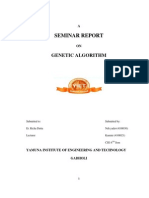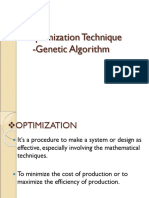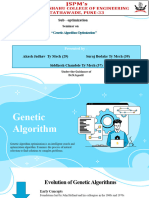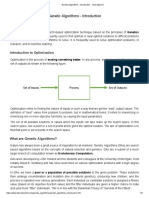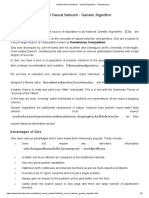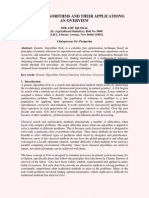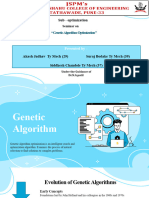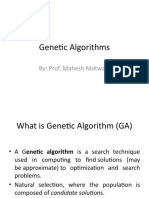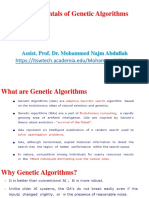0% found this document useful (0 votes)
16 views3 pagesGenetic Algorithms
Genetic Algorithms (GA) are optimization techniques inspired by natural selection, used in AI to solve complex problems through a process of evolution. They operate through five main steps: creating an initial population, evaluating fitness, selecting the best solutions, performing crossover, and introducing mutation, repeating until an optimal solution is found. GAs have applications in various fields such as robotics, finance, game AI, medicine, and engineering, with advantages including effectiveness on complex problems and global optimization, but they can be slow and require careful tuning.
Uploaded by
noorhaya6655Copyright
© © All Rights Reserved
We take content rights seriously. If you suspect this is your content, claim it here.
Available Formats
Download as PDF, TXT or read online on Scribd
0% found this document useful (0 votes)
16 views3 pagesGenetic Algorithms
Genetic Algorithms (GA) are optimization techniques inspired by natural selection, used in AI to solve complex problems through a process of evolution. They operate through five main steps: creating an initial population, evaluating fitness, selecting the best solutions, performing crossover, and introducing mutation, repeating until an optimal solution is found. GAs have applications in various fields such as robotics, finance, game AI, medicine, and engineering, with advantages including effectiveness on complex problems and global optimization, but they can be slow and require careful tuning.
Uploaded by
noorhaya6655Copyright
© © All Rights Reserved
We take content rights seriously. If you suspect this is your content, claim it here.
Available Formats
Download as PDF, TXT or read online on Scribd
/ 3
